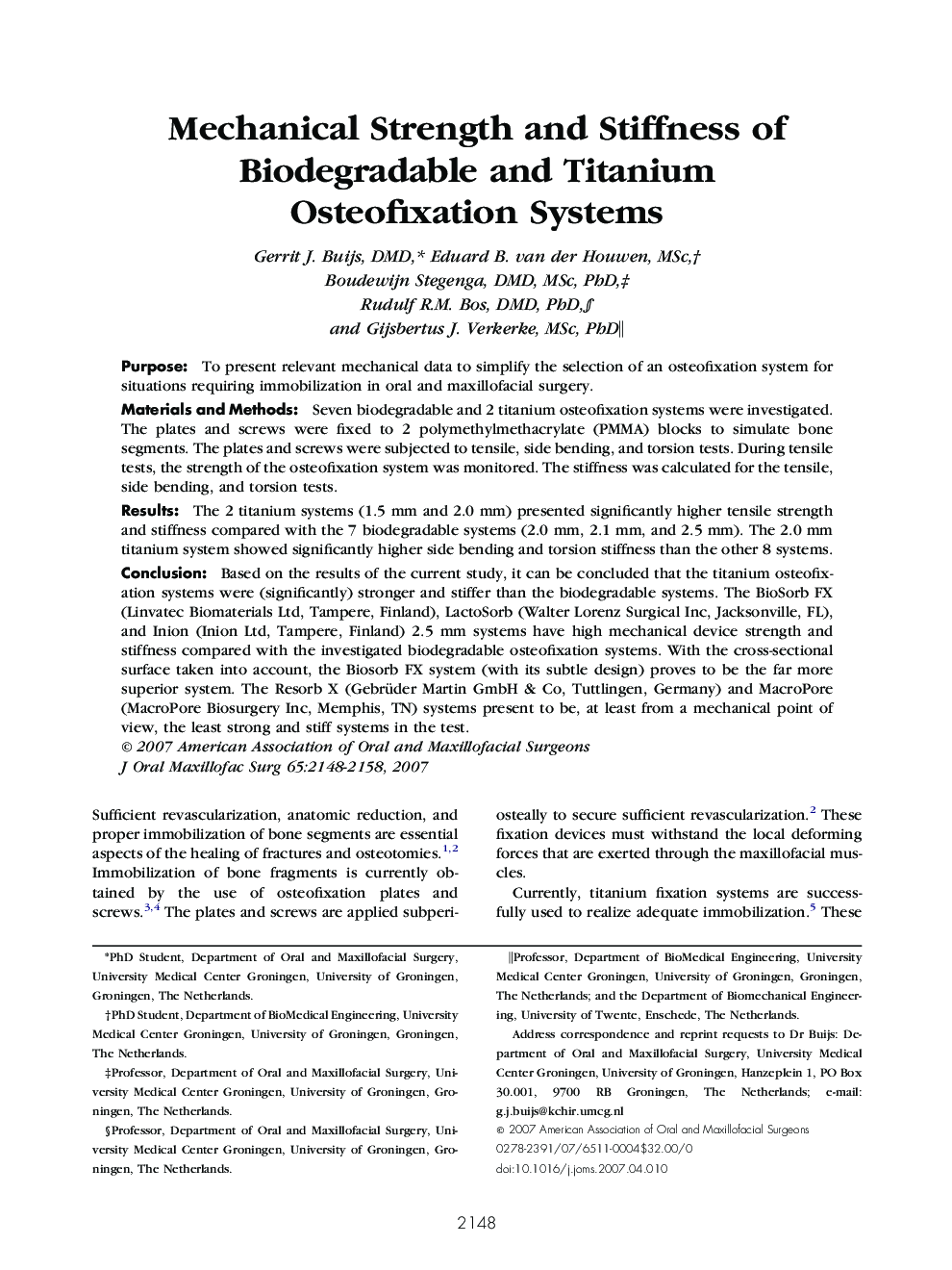| Article ID | Journal | Published Year | Pages | File Type |
|---|---|---|---|---|
| 3158670 | Journal of Oral and Maxillofacial Surgery | 2007 | 11 Pages |
PurposeTo present relevant mechanical data to simplify the selection of an osteofixation system for situations requiring immobilization in oral and maxillofacial surgery.Materials and MethodsSeven biodegradable and 2 titanium osteofixation systems were investigated. The plates and screws were fixed to 2 polymethylmethacrylate (PMMA) blocks to simulate bone segments. The plates and screws were subjected to tensile, side bending, and torsion tests. During tensile tests, the strength of the osteofixation system was monitored. The stiffness was calculated for the tensile, side bending, and torsion tests.ResultsThe 2 titanium systems (1.5 mm and 2.0 mm) presented significantly higher tensile strength and stiffness compared with the 7 biodegradable systems (2.0 mm, 2.1 mm, and 2.5 mm). The 2.0 mm titanium system showed significantly higher side bending and torsion stiffness than the other 8 systems.ConclusionBased on the results of the current study, it can be concluded that the titanium osteofixation systems were (significantly) stronger and stiffer than the biodegradable systems. The BioSorb FX (Linvatec Biomaterials Ltd, Tampere, Finland), LactoSorb (Walter Lorenz Surgical Inc, Jacksonville, FL), and Inion (Inion Ltd, Tampere, Finland) 2.5 mm systems have high mechanical device strength and stiffness compared with the investigated biodegradable osteofixation systems. With the cross-sectional surface taken into account, the Biosorb FX system (with its subtle design) proves to be the far more superior system. The Resorb X (Gebrüder Martin GmbH & Co, Tuttlingen, Germany) and MacroPore (MacroPore Biosurgery Inc, Memphis, TN) systems present to be, at least from a mechanical point of view, the least strong and stiff systems in the test.
